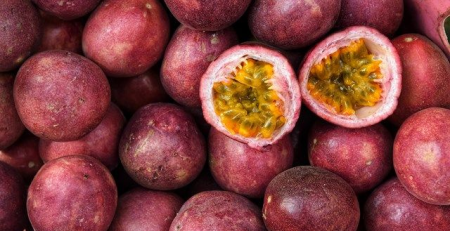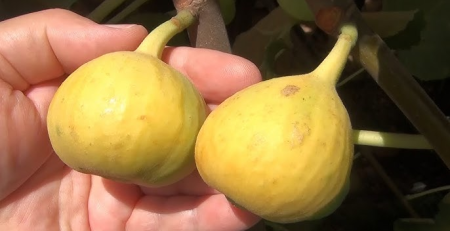What Are Hydroponic Strawberries? An In-Depth Exploration
Introduction
Hydroponic farming is rapidly gaining popularity among gardeners and commercial growers alike. This innovative method of growing plants without soil offers numerous benefits, including higher yields, faster growth, and the ability to grow crops in regions with poor soil quality. Among the many crops that thrive in hydroponic systems, strawberries are one of the most popular. In this article, we will explore what hydroponic strawberries are, how they are grown, their benefits, and how you can start growing your own hydroponic strawberries.
Understanding Hydroponics
Before delving into hydroponic strawberries specifically, it’s essential to understand the basics of hydroponics. Hydroponics is a method of growing plants using a nutrient-rich water solution instead of soil. The plants’ roots are suspended in this solution, which provides them with the essential nutrients they need to grow.
Hydroponic systems come in various forms, including:
- Nutrient Film Technique (NFT): A thin film of nutrient-rich water flows over the plant roots, providing them with a constant supply of nutrients.
- Deep Water Culture (DWC): Plants are suspended in water with their roots submerged, allowing them to absorb nutrients directly from the solution.
- Ebb and Flow: The nutrient solution floods the plant roots at intervals and then drains away, allowing the roots to receive oxygen between feedings.
- Drip System: Nutrient solution is delivered directly to the plant roots via a drip system, providing a constant supply of nutrients.
- Aeroponics: Plants are suspended in the air, and their roots are misted with a nutrient solution.
Each of these systems has its own advantages and is suitable for different types of crops, including strawberries.
What Are Hydroponic Strawberries?
Hydroponic strawberries are strawberries grown using hydroponic methods rather than traditional soil-based methods. In a hydroponic system, the strawberry plants are provided with a nutrient solution that contains all the essential elements they need to grow, such as nitrogen, phosphorus, potassium, calcium, and magnesium. This method allows for precise control over the growing environment, leading to healthier plants and higher yields.
Benefits of Growing Hydroponic Strawberries
There are several advantages to growing strawberries hydroponically, which make this method appealing to both home gardeners and commercial growers:
- Higher Yields Hydroponic systems can produce significantly higher yields compared to traditional soil-based methods. This is because the plants receive a constant and optimal supply of nutrients, water, and oxygen, leading to faster growth and more abundant fruit production.
- Faster Growth In a hydroponic system, strawberries often grow faster than in soil because they do not need to expend energy searching for nutrients. Instead, the nutrients are delivered directly to the roots, allowing the plants to focus on growth and fruit production.
- Year-Round Production Hydroponic systems can be set up indoors or in greenhouses, allowing for year-round strawberry production. This is particularly advantageous in regions with harsh climates where outdoor strawberry growing seasons are limited.
- Space Efficiency Hydroponic systems are space-efficient and can be set up vertically, making them ideal for urban environments or areas with limited space. Vertical hydroponic systems allow for more plants to be grown in a smaller footprint, maximizing the use of available space.
- Pest and Disease Control Growing strawberries hydroponically reduces the risk of soil-borne pests and diseases, which can devastate traditional strawberry crops. Without soil, there is less chance of pathogens and pests infesting the plants, resulting in healthier crops and fewer losses.
- Water Conservation Hydroponic systems use significantly less water than traditional soil-based methods because the nutrient solution is recirculated. This makes hydroponics an environmentally friendly option, especially in regions with limited water resources.
- Consistent Quality Hydroponic strawberries are often of consistent quality in terms of size, color, and flavor. This is because the controlled environment allows for optimal growing conditions, leading to uniform fruit production.
How to Grow Hydroponic Strawberries
Growing hydroponic strawberries can be a rewarding experience, whether you’re a home gardener or a commercial grower. Here’s a step-by-step guide on how to grow strawberries hydroponically:
1. Choose the Right Strawberry Variety
Not all strawberry varieties are suitable for hydroponic growing, so it’s important to choose the right one. Some of the best varieties for hydroponic systems include:
- Albion: Known for its large, sweet, and firm berries, Albion is an everbearing variety that produces fruit throughout the growing season.
- Seascape: Another everbearing variety, Seascape is valued for its high yields and delicious flavor.
- Eversweet: This variety is heat-tolerant and produces fruit even in warmer temperatures, making it a great choice for indoor hydroponic systems.
- Chandler: A popular variety for commercial growers, Chandler produces large, juicy berries with a classic strawberry flavor.
Once you’ve selected your strawberry variety, you’ll need to start the seeds or obtain young plants. Starting from seeds can be time-consuming, so many growers prefer to purchase strawberry plants from a nursery.
2. Set Up Your Hydroponic System
The next step is to set up your hydroponic system. Depending on your space and budget, you can choose from several types of systems, such as NFT, DWC, or a drip system. Here’s a brief overview of how to set up each type for strawberries:
- NFT System: In an NFT system, strawberry plants are placed in channels where a thin film of nutrient solution flows over the roots. The plants are held in place by net pots, and the roots extend into the channel to absorb nutrients. The solution is continuously recirculated, providing a constant supply of nutrients and oxygen to the plants.
- DWC System: In a DWC system, strawberry plants are placed in net pots with their roots submerged in a nutrient-rich water solution. An air pump provides oxygen to the roots, ensuring they remain healthy and productive. This system is simple to set up and maintain, making it a popular choice for beginners.
- Drip System: A drip system delivers nutrient solution directly to the base of each strawberry plant via drip emitters. The excess solution drains back into a reservoir and is recirculated. This system allows for precise control over the amount of nutrients each plant receives, making it ideal for commercial growers.
- Aeroponic System: In an aeroponic system, strawberry plants are suspended in the air, and their roots are misted with a nutrient solution at regular intervals. This method provides maximum oxygenation to the roots, leading to faster growth and higher yields. However, it is more complex and expensive to set up compared to other systems.
3. Prepare the Nutrient Solution
Strawberries require a specific balance of nutrients to thrive in a hydroponic system. The nutrient solution should contain the following elements:
- Nitrogen (N): Promotes healthy leaf and stem growth.
- Phosphorus (P): Essential for root development and fruit production.
- Potassium (K): Supports overall plant health and enhances fruit quality.
- Calcium (Ca): Prevents issues like blossom end rot and supports strong cell walls.
- Magnesium (Mg): Aids in chlorophyll production and overall plant growth.
- Iron (Fe): Necessary for photosynthesis and energy production.
You can purchase pre-mixed hydroponic nutrient solutions specifically formulated for strawberries, or you can mix your own using individual nutrient salts. The pH of the nutrient solution should be maintained between 5.5 and 6.5, as strawberries prefer slightly acidic conditions. Regularly monitor the pH and adjust it as needed using pH up or down solutions.
4. Plant Your Strawberries
Once your hydroponic system is set up and the nutrient solution is ready, it’s time to plant your strawberries. Place the strawberry plants in net pots filled with a growing medium such as coconut coir, perlite, or rockwool. The growing medium provides support for the plants and helps retain moisture around the roots.
In an NFT or DWC system, position the net pots so that the roots are in contact with the nutrient solution. In a drip system, ensure the drip emitters are positioned to deliver the solution directly to the base of each plant. Space the plants about 6-12 inches apart to allow for adequate airflow and prevent overcrowding.
5. Maintain the Hydroponic System
Proper maintenance is crucial for the success of your hydroponic strawberries. Here are some key tasks to keep your system running smoothly:
- Monitor Nutrient Levels: Regularly check the nutrient levels in your solution and top it up as needed. Over time, the plants will absorb nutrients from the solution, so it’s important to maintain the correct balance.
- Check pH Levels: Monitor the pH of the nutrient solution at least once a week. If the pH is outside the optimal range, adjust it using pH up or down solutions.
- Ensure Proper Lighting: Strawberries require plenty of light to produce fruit. If you’re growing them indoors, use grow lights to provide at least 12-16 hours of light per day. LED grow lights are a popular choice for hydroponic systems due to their energy efficiency and ability to provide the full spectrum of light.
- Prune and Train Plants: Regularly prune your strawberry plants to remove any dead or yellowing leaves. This helps to prevent disease and encourages healthy growth. You may also need to train the plants by gently guiding the runners or stems to grow in the desired direction.
- Pollinate Flowers: In a hydroponic system, pollination is often necessary, especially if you are growing your strawberries indoors or in a controlled environment. Unlike outdoor strawberry plants that rely on wind or insects for pollination, indoor hydroponic strawberries need manual assistance.
Here’s how you can ensure successful pollination:
- Hand Pollination: Use a small, soft brush or cotton swab to gently transfer pollen from the anthers (the male part) of one flower to the stigma (the female part) of another. You can do this by lightly brushing the brush or swab over the center of each flower.
- Vibrating Tool: Some growers use a small vibrating tool, like an electric toothbrush, to mimic the natural vibrations caused by bees. Gently touch the vibrating tool to the flowers to shake loose the pollen, which will help with pollination.
- Air Circulation: Ensure good air circulation in your growing area, as this can aid in the natural transfer of pollen between flowers. Using fans can help create a gentle breeze that simulates the outdoor environment.
6. Harvesting Hydroponic Strawberries
One of the most rewarding aspects of growing hydroponic strawberries is the harvest. Strawberries typically begin to ripen about four to six weeks after flowering, depending on the variety and growing conditions.
Here’s how to harvest your strawberries:
- Check for Ripeness: Strawberries are ready to harvest when they are fully red and have a sweet aroma. The berries should be firm but give slightly when gently squeezed. If the berries are still white or green at the tips, leave them on the plant for a few more days.
- Harvest Gently: Use your fingers or a pair of scissors to gently cut or twist the strawberry from the plant, leaving the green calyx (the leafy part at the top) attached. Be careful not to damage the plant or unripe berries.
- Harvest Frequently: Regular harvesting encourages the plant to produce more fruit. Check your plants daily during the peak harvest season and pick ripe berries promptly.
- Store Properly: If you’re not eating your strawberries immediately, store them in a cool, dry place. Refrigeration can extend their shelf life, but for the best flavor, it’s recommended to eat them within a few days of harvesting.
7. Troubleshooting Common Issues in Hydroponic Strawberry Growing
While hydroponic strawberries are generally easier to manage than traditional soil-grown strawberries, they can still encounter some challenges. Here are a few common issues and how to address them:
- Nutrient Deficiencies: If your strawberries show signs of yellowing leaves, stunted growth, or poor fruit development, they may be suffering from nutrient deficiencies. Regularly monitor your nutrient solution and adjust it as needed to ensure a balanced supply of essential nutrients.
- Root Rot: Root rot can occur if the roots are submerged in water for too long without adequate oxygenation. To prevent root rot, ensure your hydroponic system provides sufficient oxygen to the roots, and avoid overwatering.
- Pest Infestations: While hydroponic systems reduce the risk of soil-borne pests, strawberries can still be susceptible to pests like aphids, spider mites, and whiteflies. Monitor your plants regularly and use natural or organic pest control methods, such as insecticidal soap or neem oil, if needed.
- Temperature and Humidity: Strawberries prefer moderate temperatures and humidity levels. If the growing area is too hot or humid, it can stress the plants and reduce fruit production. Use fans, heaters, or dehumidifiers as needed to maintain optimal growing conditions.
- Algae Growth: Algae can form in the nutrient solution if it is exposed to light. To prevent algae growth, keep your nutrient reservoir covered and ensure the hydroponic system is properly shaded.
The Future of Hydroponic Strawberry Farming
Hydroponic strawberry farming is poised to play a significant role in the future of agriculture. As the global population grows and arable land becomes scarcer, hydroponics offers a sustainable solution for producing high-quality food in urban environments and regions with challenging growing conditions.
Several trends are emerging in hydroponic strawberry farming:
- Commercial Hydroponic Farms: Large-scale hydroponic farms are being established worldwide, producing strawberries and other crops year-round in controlled environments. These farms use advanced technology, such as automated nutrient delivery systems and climate control, to optimize production and reduce labor costs.
- Vertical Farming: Vertical hydroponic systems are becoming increasingly popular in urban areas, where space is limited. By stacking multiple layers of strawberry plants, vertical farms can maximize production in a small footprint. This method is particularly appealing for urban agriculture and can help bring fresh, locally grown strawberries to city dwellers.
- Sustainable Practices: As consumers become more environmentally conscious, there is a growing demand for sustainably grown produce. Hydroponic strawberry farming aligns with this trend by using less water, reducing the need for pesticides, and minimizing the carbon footprint associated with transportation.
- Integration with Smart Technology: The integration of smart technology, such as sensors and IoT devices, is revolutionizing hydroponic farming. These technologies allow growers to monitor and control environmental conditions, nutrient levels, and plant health remotely, leading to increased efficiency and higher yields.
- Increased Accessibility: Advances in hydroponic technology are making it more accessible to home gardeners and hobbyists. DIY hydroponic kits, educational resources, and community support are enabling more people to experiment with hydroponic strawberry growing at home.
Conclusion
Hydroponic strawberries offer a fresh and innovative approach to growing one of the world’s most beloved fruits. Whether you’re a home gardener looking to enjoy fresh strawberries year-round or a commercial grower seeking to maximize production, hydroponic systems provide the tools and flexibility to achieve your goals.
By understanding the basics of hydroponics, selecting the right strawberry varieties, and maintaining a healthy growing environment, you can enjoy the benefits of hydroponic strawberry farming. With their high yields, consistent quality, and reduced environmental impact, hydroponic strawberries are not only a delicious treat but also a step forward in sustainable agriculture.
Whether you’re just starting out or looking to scale your operation, the future of hydroponic strawberries is bright and full of potential. Happy growing!













Leave a Reply